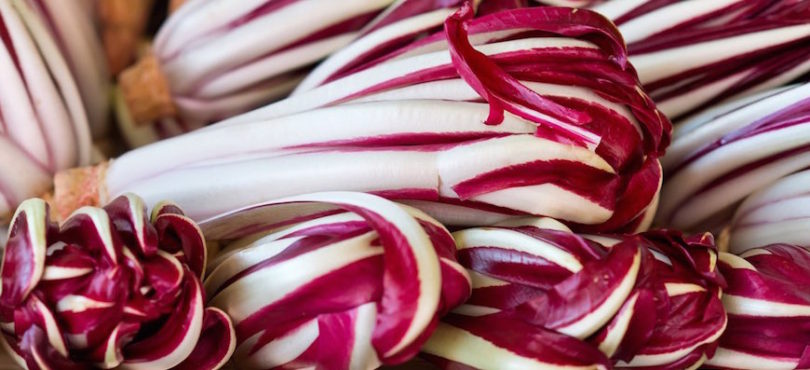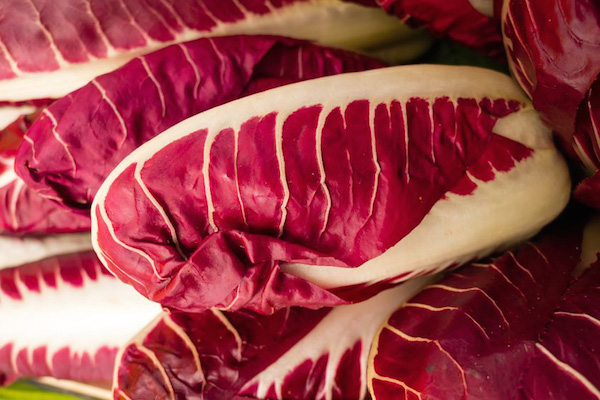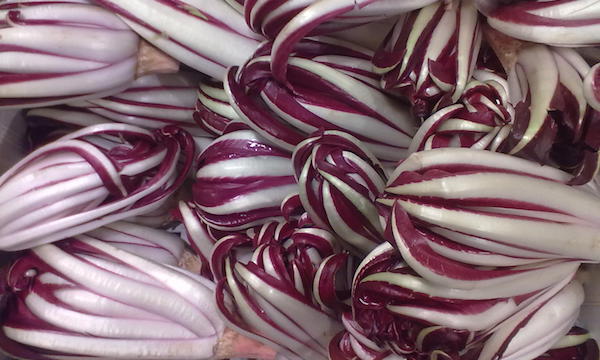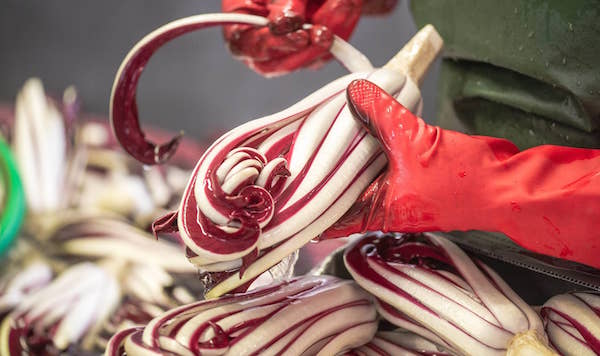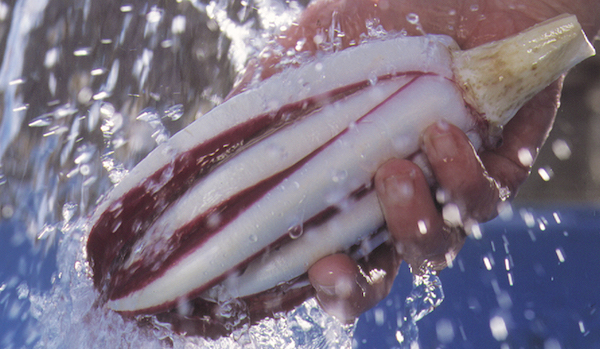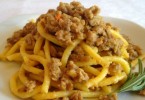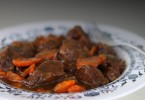All about the Treviso Red Chicory IGP
The Treviso Red Chicory, famous IGP (in English, PGI: Protected Georgaphical Indication) of Veneto Region, is coming, together with the cold winter temperatures. More ice on the clump means a better quality and a greater taste of this product, which from November to march, can’t miss on the Venetian tables.
Treviso Red Chicory follows a strict Code of Conduct that nominate it as a Protected Georgaphical Indication product, it is divided in two categories: the Early and the Late Red Chicory, which is the most required, following a particular cultivation and making process.
The Early Treviso Red Chicory IGP, also called Precoce
The Early variety is sown with hot temperatures, within July and the ripening occurs completely in the field. Dragged the hottest months, the tuft are bound, which consists in binding the green leaves among them, to increase the birth of new internal leaves, inhibiting the photosynthesis to improve the ripening. The harvest starts at the beginning of September and it will last about two months, as the selling. After the harvest the external leaves of the tuft and the core are removed, the collar and the root (called fittone) are washed and cleaned from the earth remained.
Characteristics of the Early Treviso Red Chicory
The Early Treviso Red Chicory looks like a long and oversize tuft, with larger leaves, which start with a white central vein to reach a dark red-purple colour. The flavour is pretty bitter, stronger than the late variety and the consistency is crispy.
The Late Treviso Red Chicory IGP, also called Tardivo
The pride of the agriculture of Treviso, the Late Red Chicory is the most precious variety of this chicory, unique for its making process and for its taste, lightly bitter.
The Late is harvested after the Early, from the first days of November following three production steps. The first is the “preforzatura”, in which the harvested plants with the roots are cleaned and the external leaves are removed. After this initial cleaning, big bunches are created, binding together 25-30 tufts in order to place the collars at the same height. Then, the bunches are buried and covered with protective tunnels to avoid the contact with rains and ice.
The second step is the “imbiancamento” (in English: whitening), which make unique the taste, the consistency and the appearance of the Late Chicory. During this phase the plants are soaked until the collar in baths with slope water at a controlled temperature until a complete ripening, about 15-20 days. During this period the plant make new internal leaves which remain white and without chlorophyll, because they are protected from light sources. This operation, carefully checked, allows developing particular organoleptic characteristics, the leaves lost their fibrous consistency, becoming crispy and lightly bitter.
The last step is the “toilettatura” or finishing phase, where the tufts are set to be sold. Once unbound, the single tufts are cleaned from the external leaves and washed with fresh water.
Characteristics of the Late Treviso Red Chicory
The shoots looks regular and homogenous, the tuft closed and solid. The back stalk is white, large and fleshy. In the mouth it is crispy and solid, from here starts a piece of leaf thin and reddish-purple. Savoury and slightly bitter, it is perfect to be eaten both cooked and uncooked in various ways.

